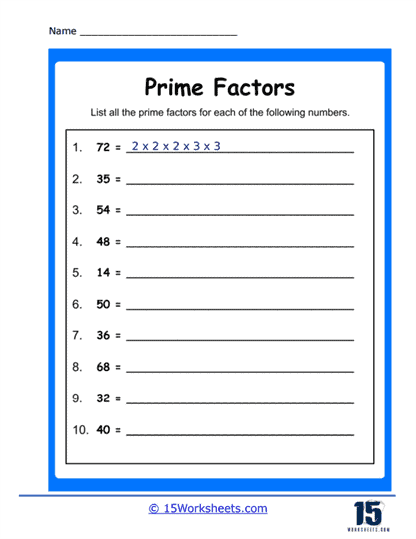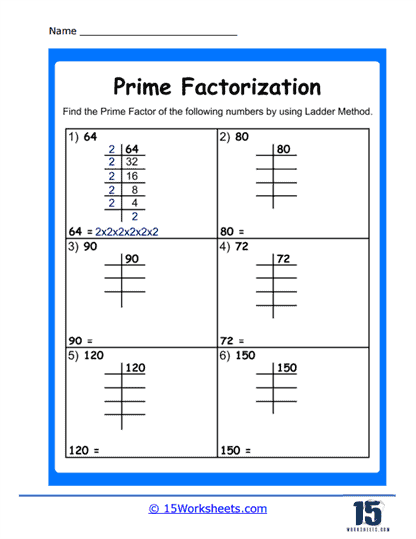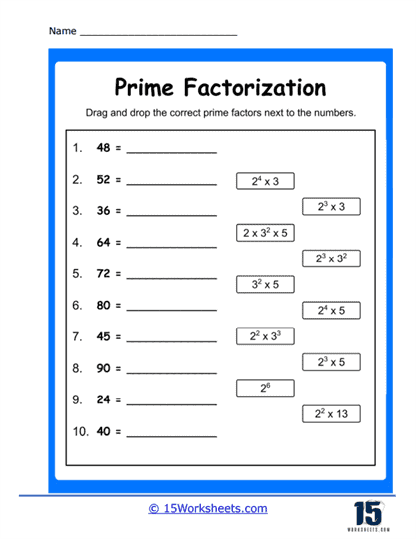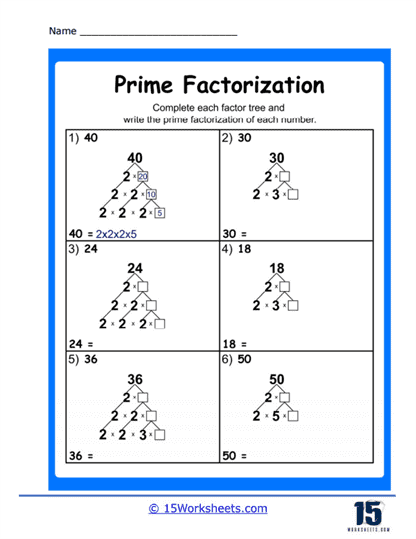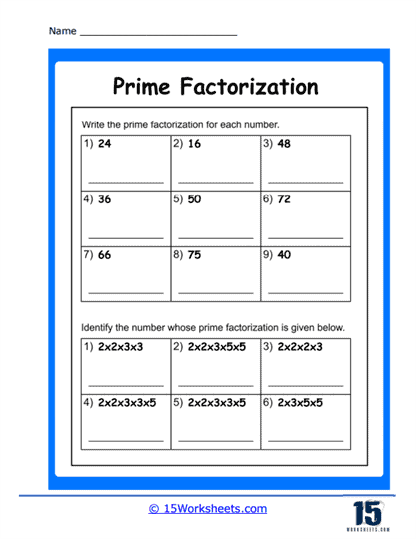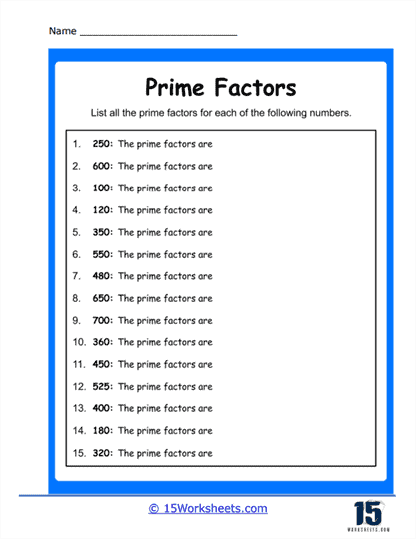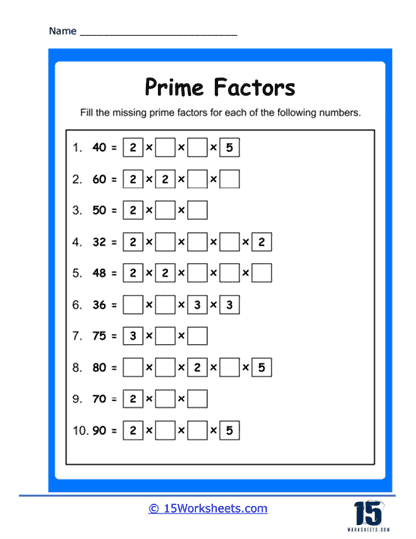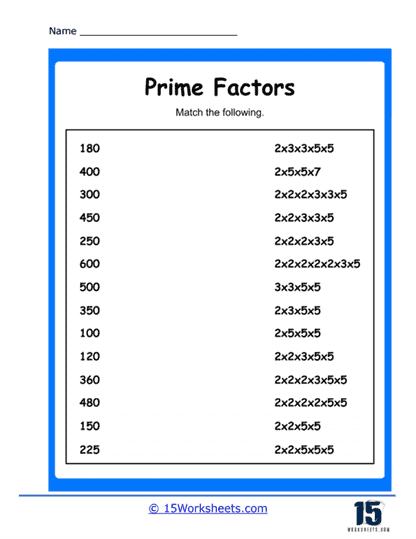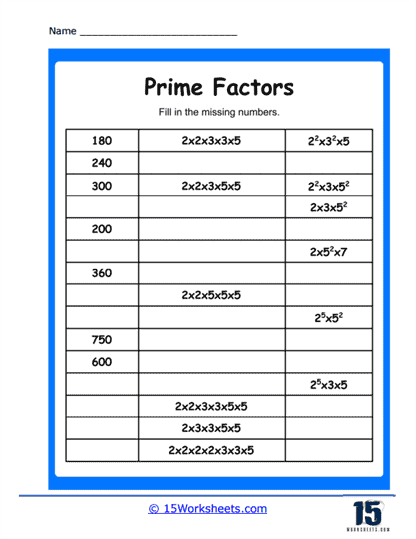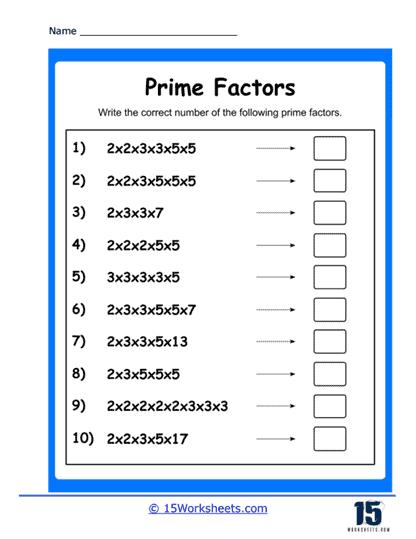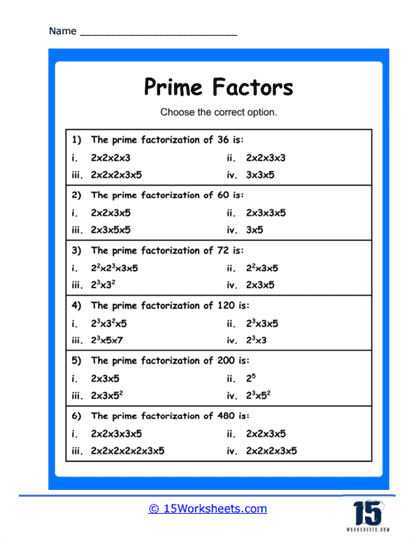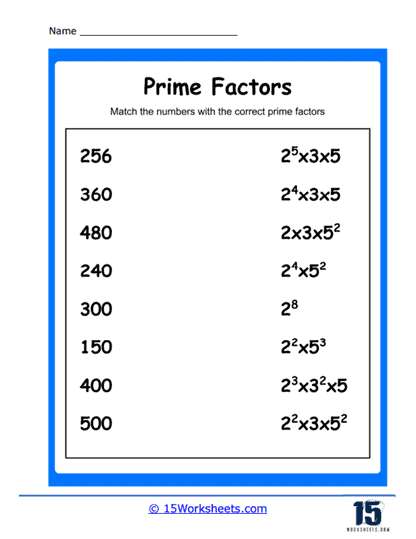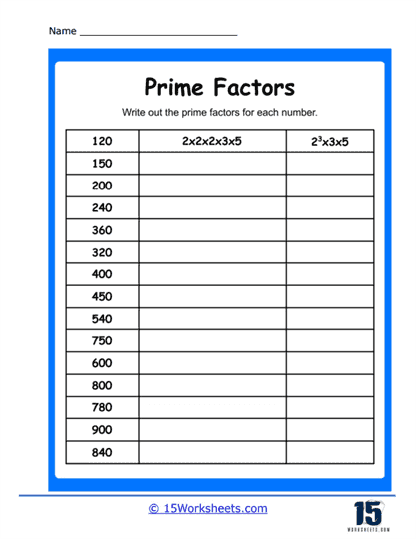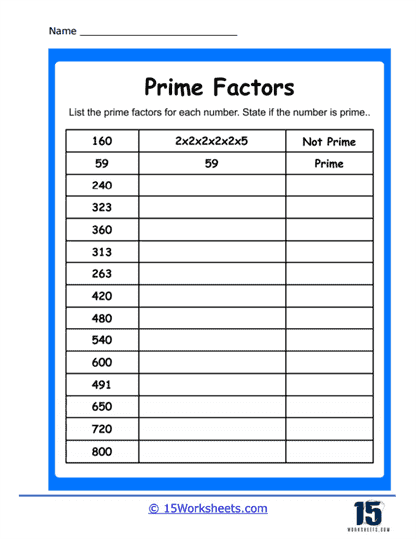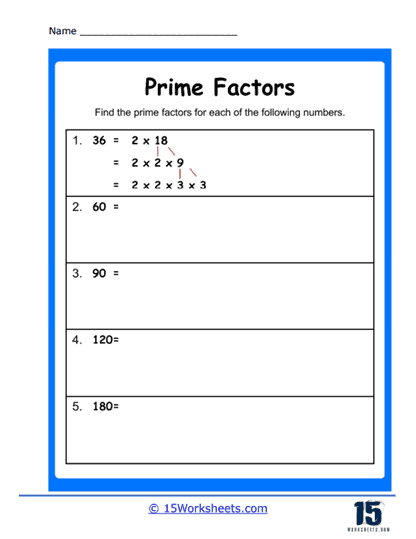Prime Factorization Worksheets
About These 15 Worksheets
Within the vast realm of mathematics, there are numbers that possess a unique charm, and they are called prime numbers. A prime number is a number greater than 1 that can only be divided by itself and 1 without leaving any remainders. Now, these prime numbers have close relatives known as “prime factors.” When a number can be expressed as a product of prime numbers, those primes are its prime factors. For example, the number 6 can be split into 2 and 3, both of which are prime. Hence, 2 and 3 are the prime factors of 6. To delve deeper into this enchanting world and strengthen our understanding, educators have crafted a special tool called “Prime Factors Worksheets.”
Prime factors are a cornerstone of number theory, one of the foundational blocks of mathematics. If we picture numbers as buildings, then prime factors are like the bricks that make up these buildings. Recognizing these bricks is essential as it gives us insights into the structure of numbers. Just as we can understand a building better by knowing the materials it’s made of, we gain a clearer perspective on numbers by knowing their prime factors.
Now, Prime Factors Worksheets are the magical guides that navigate us through the maze of numbers, helping us identify these prime building blocks. They offer a diverse range of exercises to enrich our grasp on the concept. A basic exercise might introduce a number, say 8, and prompt you to list its prime factors. This exercise seems simple but is crucial for cementing your foundational understanding.
But the journey doesn’t stop there. As you venture deeper into the worksheets, they present more layered challenges. For instance, you might encounter a series of numbers and be tasked with identifying the common prime factors among them. This elevates the difficulty level, nudging you to analyze multiple numbers simultaneously and sharpening your analytical skills in the process.
To sprinkle some real-world flavor into the mix, the worksheets also incorporate word problems. An example could be, “If Lucy has 12 candies and wants to divide them equally among her friends in the most number of ways possible, how many friends can she have?” This kind of problem revolves around the prime factors of 12 and demonstrates the concept’s practical application.
Another interesting exercise is when these worksheets challenge your pattern-finding abilities. You might be given a sequence where numbers are expressed in terms of their prime factors, and you could be asked to predict the next number in the series. This merges the knowledge of prime factors with pattern recognition, thereby enriching your number sense.
The Benefits of These Worksheets
The beauty of these sheets lies in their structured approach to mastering prime factors. Each exercise polishes a specific facet of your understanding. Prime factors are akin to understanding the DNA of numbers. When you’re adept at identifying prime factors, numbers become less intimidating. You begin to see patterns and relationships that were previously hidden. This skill is invaluable, especially as you progress into higher mathematical terrains. In algebra, for example, factorization plays a central role, and understanding prime factors is a preliminary step towards mastering this.
Outside the cozy corners of the classroom, you might wonder, “Where does the magic of prime factors come alive?” In truth, prime factors subtly touch various parts of our day-to-day life.
Imagine you’re playing with building blocks, trying to build structures using an equal number of blocks for each layer. The number of ways you can arrange them can often be determined by understanding the prime factors of the total number of blocks you have.
In everyday chores, prime factors also make their presence felt. If you’ve got a set of dishes to arrange on a shelf, knowing the prime factors of the total number of dishes can help you understand the different ways you can stack them.
Even in festive scenarios, like when you’re sharing holiday treats among friends, understanding prime factors can aid in ensuring everyone gets an equal share. If you have a certain number of treats and a certain number of friends, the prime factors can guide you in splitting the treats optimally.
In essence, prime factors, though rooted in mathematical theory, resonate with practical aspects of daily life. Prime Factors Worksheets are more than mere sheets of numbers; they’re windows into a world where numbers tell stories, and prime numbers play the leading role. As you immerse yourself in them, always remember: with every prime factor you uncover, you’re getting a step closer to unraveling the mysteries of the numerical universe.

